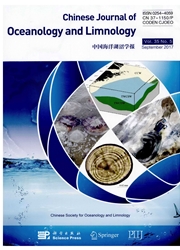

 中文摘要:
中文摘要:
Dunaliella 盐咸滩,一个光圈没有一面僵硬房间墙的容忍的单细胞的绿水藻,能住在从 0.05 ~ 5 mol/L NaCl 的咸度。这些特征 ofD。盐咸滩为抗体的生产使它成为一位理想的主人,口头的疫苗,;商业地珍贵的多肽。生产 heterologous 蛋白质 fromD 的高水平。盐咸滩,高度有效的倡导者被要求在控制状况下面驾驶目标基因的表示。在现在的学习,我们从碳的 anhydrase (CAH ) 克隆 1.4 kb 的 5 ′ franking 区域基因 ofD。由 genomic 走的盐咸滩;PCR。碎片被绑扎到 pMD18-T 向量;描绘。顺序分析显示这个区域包含了保存主题,包括一个 TATA- 相似盒子;CAAT 盒子。有 transcriptional 的一个潜在的角色的双人脚踏车(GT ) n 重复控制,也在这个区域被发现。theCAH 基因的抄写开始地点(TSS ) 被 5 ′种族决定;嵌套的 PCR 方法。转变试金证明 1.4 kb 碎片能驾驶可选的工具条(bialaphos 抵抗) 的表示基因当熔化在狐被转变时。由 biolistics 的盐咸滩。北弄污杂交证明酒吧抄本很充满在 2 mol/L NaCl 种的房间,;不太充满 0.5 mol/L NaCl,显示酒吧基因的那表情在高咸度被导致。这些结果建议 theCAH 基因倡导者的潜在的使用导致 heterologous 基因 inD 的表示。在改变的盐状况下面的盐咸滩。
 英文摘要:
英文摘要:
Dunaliella salina, a halotolerant unicellular green alga without a rigid cell wall, can live in salinities ranging from 0.05 to 5 mol/L NaC1. These features of D. salina make it an ideal host for the production of antibodies, oral vaccine, and commercially valuable polypeptides. To produce high level of heterologous proteins from D. salina, highly efficient promoters are required to drive expression of target genes under controlled condition. In the present study, we cloned a 5' franking region of 1.4 kb from the carbonic anhydrase (CAH) gene ofD. salina by genomic walking and PCR. The fragment was ligated to the pMD18-T vector and characterized. Sequence analysis indicated that this region contained conserved motifs, including a TATA- like box and CAAT-box. Tandem (GT)n repeats that had a potential role of transcriptional control, were also found in this region. The transcription start site (TSS) of the CAH gene was determined by 5' RACE and nested PCR method. Transformation assays showed that the 1.4 kb fragment was able to drive expression of the selectable bar (bialaphos resistance) gene when the fusion was transformed into D. salina by biolistics. Northern blotting hybridizations showed that the bar transcript was most abundant in cells grown in 2 mol/L NaCl, and less abundant in 0.5 mol/L NaCl, indicating that expression of the bar gene was induced at high salinity. These results suggest the potential use of the CAH gene promoter to induce the expression of heterologous genes in D. salina under varied salt condition.
 同期刊论文项目
同期刊论文项目
 同项目期刊论文
同项目期刊论文
 期刊信息
期刊信息
